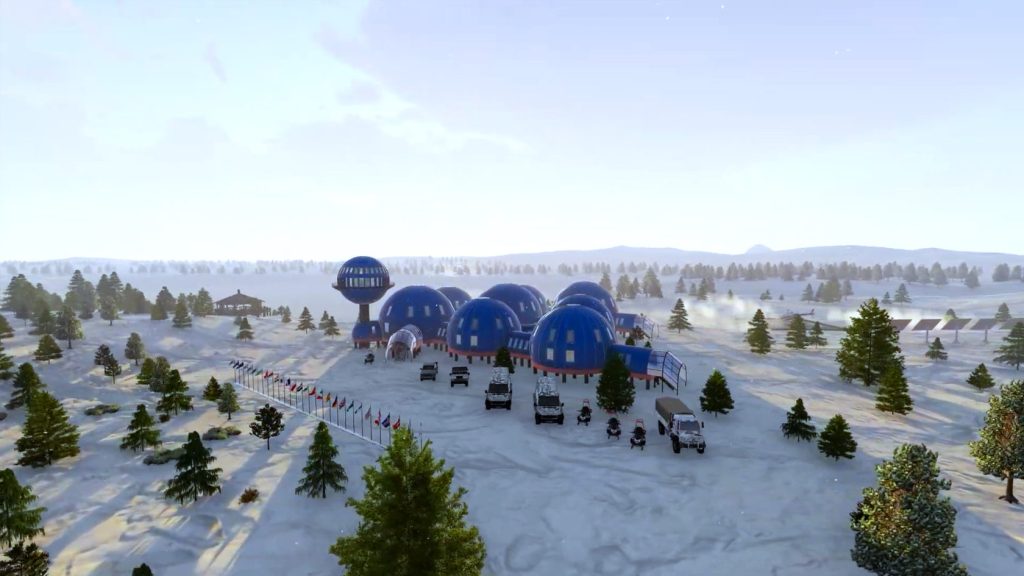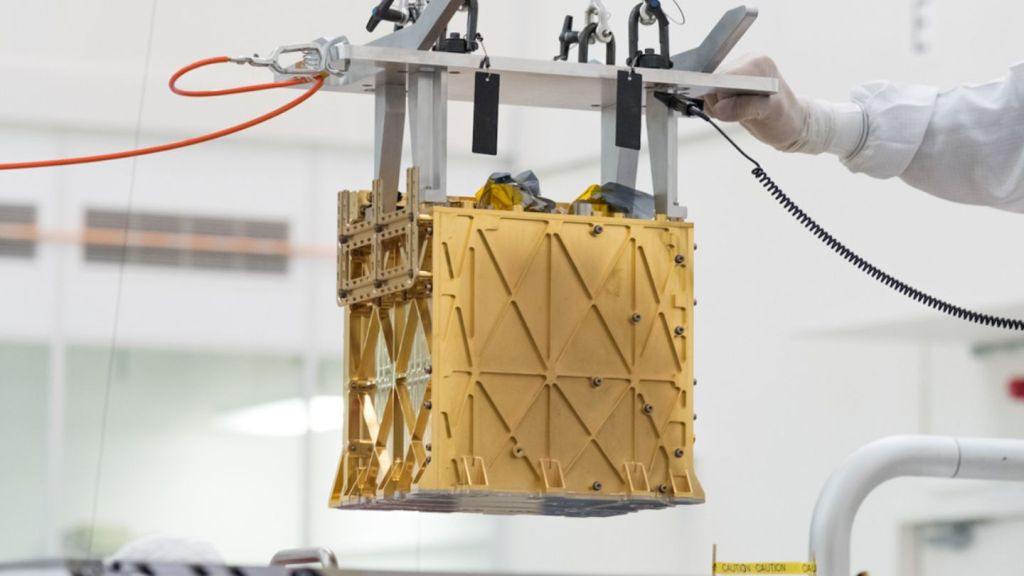Russia plans to build a carbon-zero outpost in the Arctic within the next few years in order to demonstrate autonomous renewable power and help remote polar communities adapt to rapid climate change.
Called “Snowflake,” the modular station will be constructed in the Land of Hope, a region that lies at the northern edge of the Ural mountain range and the base of Yamal Peninsula.
Videos by VICE
The project is spearheaded by the Moscow Institute of Physics and Technology (MIPT), but is intended to be a collaboration between many other Russian and international partners. The team is shooting to have at least the central module, a large domed structure, constructed by 2022, at an initial cost of about 12 million euros (13.3 million USD).
“We are witnessing climate change that is happening fast, and we do want to outpace it by making the most of our efforts at Snowflake,” said Yury Vasiliev, executive director of the MIPT Institute of Arctic Technologies, in an email.
“The station plays a role in this as a large-scale experiment that would demonstrate that we could go zero-carbon and power a major facility—even in the Arctic—without burning diesel or other fossil fuels,” he continued. Snowflake is designed to be “fully autonomous,” according to MIPT, which means that it will have its own onsite energy grid that runs on sources like wind, power, and hydrogen fuel.
Snowflake will be open to researchers in fields as diverse as telecommunication, biotech, clean agriculture, robotics, and artificial intelligence systems, but it may also host more informal guests like students, media, or dignitaries. The overarching goal is to bring interdisciplinary specialists together to develop technologies to support communities in the Arctic, which is warming faster than any other region on Earth.
“We expect the station to be a long-term project,” said Vasiliev. “As we build it and launch one stage after the other, new initiatives could emerge, and we could expand on top of what is now described as the complete facility.”
“We are hoping for fairly large groups of foreign and Russian guests,” he added.
It was no easy feat to select a location that balanced this need for visitor accessibility with immersion in “the real Arctic,” as Vasiliev described it. The team also had to steer clear of sites near hydrocarbon fields, even though their target district (Yamalo-Nenets Autonomous Okrug) produces the majority of Russia’s natural gas and much of its oil.
The Land of Hope fits those parameters, as it is sparsely populated and located hundreds of miles away from active extraction sites. The region is mainly known to the Nerkagi, Indigenous reindeer herders who assemble there during their annual nomadic treks.
“It is a hub of sorts, a trading post they pass through two times a year, as they take their herds northwards and then southwards,” Vasiliev explained. “That is where they get medical attention, where children go to school, and people exchange goods and socialize. It is the region’s hot spot.”
“For one thing, this means that besides testing and promoting modern technologies, the guests of Snowflake will experience the life of the people for whom those technologies are being developed,” he said.
Those emerging technologies include efforts to phase out the use of diesel fuel to power the Arctic, which Snowflake will accomplish by relying mainly on hydrogen fuel, a form of power that generates electricity by combining hydrogen and oxygen atoms. The Snowflake team is currently designing a microgrid in which each module would have its own energy storage system based on lithium-ion and thermal accumulators, Vasiliev said.
“It is apparent that the technologies needed for it are costly, and there is a kind of a vicious circle involved,” he noted. “The technologies are expensive because they are rarely used so far, and they are fairly complex. But at the same time, it takes considerable demand on the part of the market, in order to make them simpler and industrially scalable.”
Snowflake researchers want to develop and showcase those technologies in a real Arctic setting to boost that demand and stimulate investment in both the public and private spheres.
Given that nations like Russia, the United States, and Canada are all stakeholders in the Arctic—while also being major oil and gas producers—projects like Snowflake could help envision multilateral ways to reduce the greenhouse gas emissions that are destabilizing these fragile ecosystems and communities.
This goal is even embodied by “a symbolic meaning” in choosing the Land of Hope as the site, Vasiliev said, and not only because of its cheery name in English.
“The [Ural] mountains are often seen as dividing Europe and Asia,” he noted, “which makes it a fitting location for a facility that unites the nations in joint research.”




